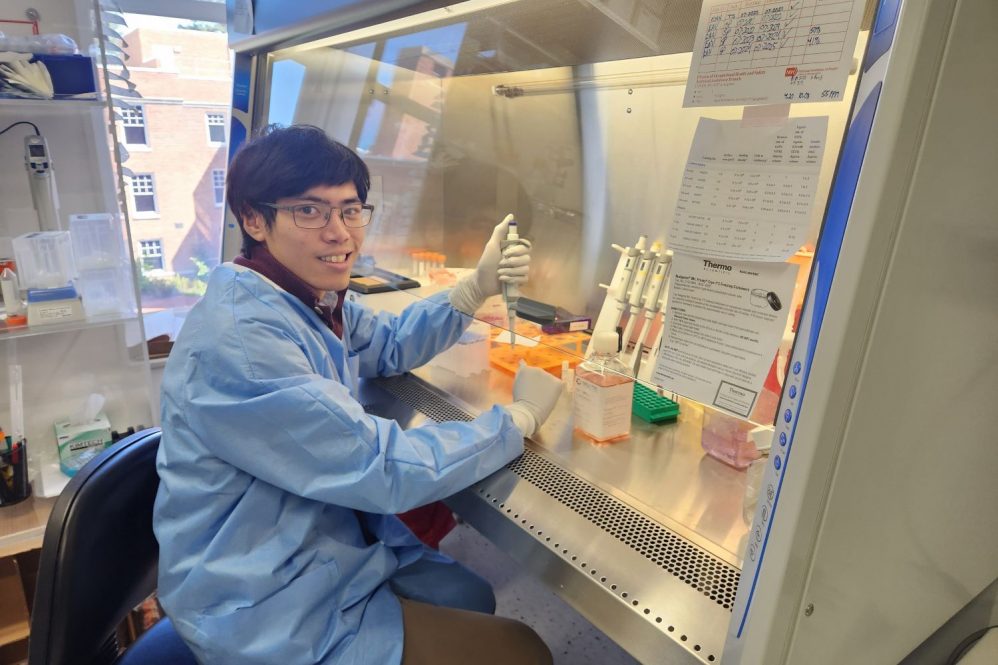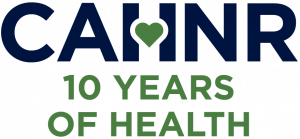Andrei Abarientos '26 (CAHNR) is interning this summer at Rocky Mountain Laboratories, a National Institutes of Health laboratory, to learn about a unique aspect of this harmful insect

Andrei Abarientos '26 (CAHNR), a pathobiology and veterinary science major, is interning this summer at Rocky Mountain Laboratories, a National Institutes of Health laboratory in Montana (Contributed photo)
Ticks are common disease carriers for illnesses like Lyme, a condition that is seen all too frequently in Connecticut.

Andrei Abarientos '26 (CAHNR), a pathobiology and veterinary science major, is interning this summer at Rocky Mountain Laboratories, a National Institutes of Health laboratory in Montana to learn about a unique aspect of these harmful insects.
The lab focuses on understanding how ticks' salivary glands interact with host organisms to allow the tick to feed effectively and promote the spread of pathogens.
"There's a pretty dynamic interface between tick, host, and pathogen, and I think the way they're all interconnected is really interesting," says Abarientos. "I wanted to explore a lot more of that vector biology on the insect side of things, so this lab ended up being a really good fit."
Rocky Mountain Laboratories is and has been at the forefront of tick research in the U.S. In fact, it was there that researchers discovered Borrelia burgdorferi, the pathogen responsible for Lyme Disease.
"It's really kind of incredible to be able to do cutting-edge science, working with some of the best technology around," Abarientos says.
This summer, Abarientos has been purifying and characterizing enzymes called kallikreins that are important for wound healing in humans. Certain proteins in tick saliva have been found to inhibit their activity.
This means that when a tick latches on to feed from a human, the proteins in their saliva prevent normal wound healing, leaving the wound open allowing the tick to feed more effectively and for longer. This also gives pathogens the tick may be carrying a greater opportunity to infect the host.
Abarientos is looking to identify which cellular substrates are responsible for enabling these enzymes.
"Different enzymes have different substrates they're able to cleave, or split," Abarientos says. "They all kind of have their own specific abilities to hydrolyze, or break down with water."
He is also performing a process known as a "scratch assay." This involves creating a "wound" on a petri dish and observing how the enzymes work to heal it.
With more understanding of these mechanisms, researchers can eventually find ways to better protect people from tick-borne pathogens.
At UConn, Abarientos works with Paulo Verardi, department head and professor of pathobiology and veterinary sciences, on vaccines for tick-borne diseases.
Abarientos found this internship through his connection with Verardi and Verardi's former graduate student, Yuxiang Wang, who now works as a postdoctoral fellow at the NIH.
"Being able to do wet lab work at UConn was pretty instrumental," Abarientos says. "A lot of the techniques I'm using now is either exactly the same or very similar to the things I've done at UConn."
Abarientos says he also appreciates the One Health approach the College takes, considering the interactions between human, animal, and environmental health.
"In pathobiology where there's such a big One Health focus, it gives you the right framework to tackle research questions broadly, even outside of UConn," Abarientos says.
This work relates to CAHNR's Strategic Vision area focused on Enhancing Health and Well-Being Locally, Nationally, and Globally.






